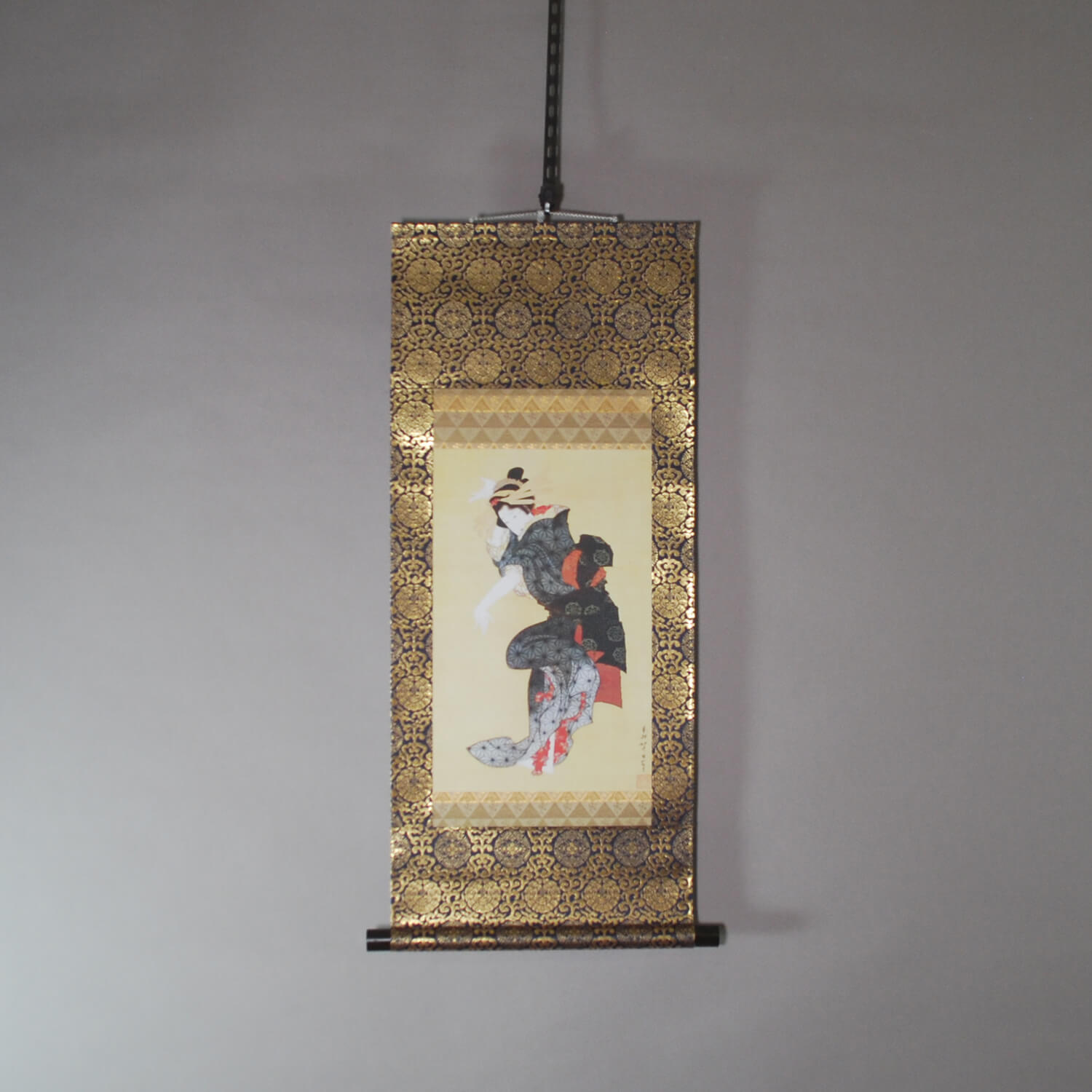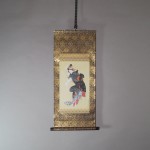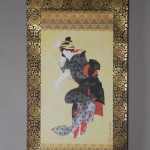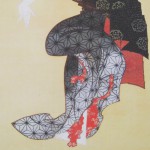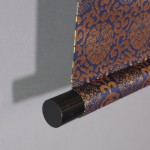Products Lineup
News / Blog
Other Menus
Kakejiku Hanging Scroll: A Dancing Woman / Hokusai Katsushika - Teodori-zu
- Product ID
- 0176
- Name
- Hokusai Katsushika
- Profile
1760-1849
Ukiyo-e artist- Size
- 423mm x 870mm
- Roller End Material
- Red sandalwood
- Material of the Work
- Chemical fiber / Printed
- Stock Condition
- In Stock
- Description
Hokusai Katsushika was an Ukiyo-e artist in the latter part of Edo period. His major works were “Fugaku sanjuu rokkei” (Thirty-six views of Mount Fuji) and “Hokusai Manga” (Hokusai’s sketches), and he was a famous painter throughout the world.
He drew shinrabanshou (all things in nature, the whole of creation) and many other things, and published more than 30,000 works in his life. He was outstanding not only in terms of his woodcuts but also in his original drawings. His status as a painter was solidified through Fugaku sanjuu rokkei (Thirty-six views of Mount Fuji), his masterpiece. It’s not going too far to say that he invented a new kind of landscape paintings.
Hokusai’s achievements in the Ukiyo-e world are like massive mountains, and we can see his great illustrative powers and quick sketches through Hokusai Manga. Additionally, he made a great contribution to the spread of painting techniques and education for common people by producing innovations in yomihon (books for reading) and sashie (illustration), publishing many picture books such as Hokusai Manga and demonstrating his ability to depict forms with hair brushes. He founded the Katsushika school and later had an influence not only on Western impressionist artists such as Vincent Van Gogh, but also on craftsmen and musicians. His great achievement is highly regarded, especially abroad, and he was the only Japanese who was ranked among ‘the top 100 people with the most important achievements in this millennium’ in “Life,” a U.S. magazine, in 1999.
Hokusai continued to study painting techniques even in the latter part of his lifetime. He considered knowledge about the skeletal structure of a body as necessary to depiction of human figures. He became a pupil of Yajibee Nagura, a bonesetter.
After that, Hokusai Katsushika said that it was not until he thoroughly studied bonesetting and anatomy that he understood how to depict real human figures.
This work is A dancing Woman by Hokusai Katsushika.He depicted the moment when a woman was dancing. We can get a sense of her lively movement through the work thanks to Hokusai’s studies on the human body. There were no other Japanese-style paintings that were depicted as realistic as Hokusai’s works were at that time, so we can see how outstanding Hokusai’s painting talent was.

